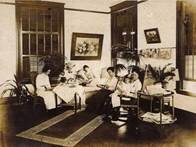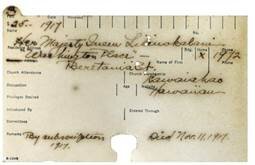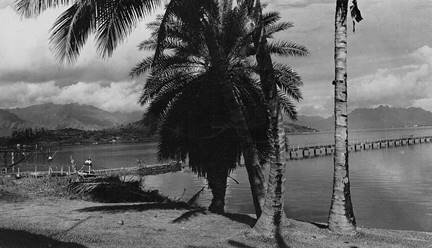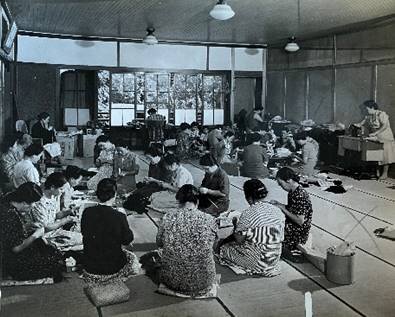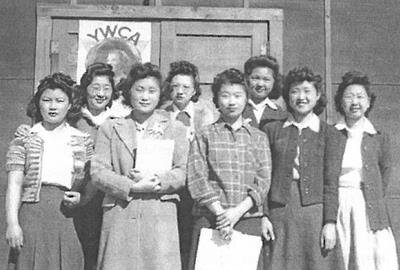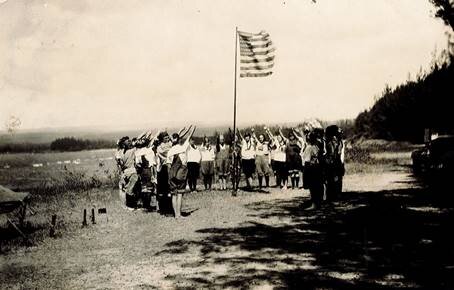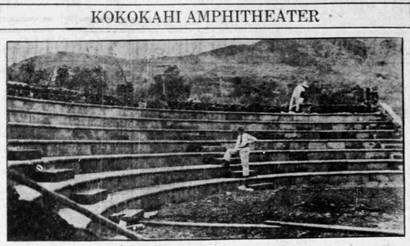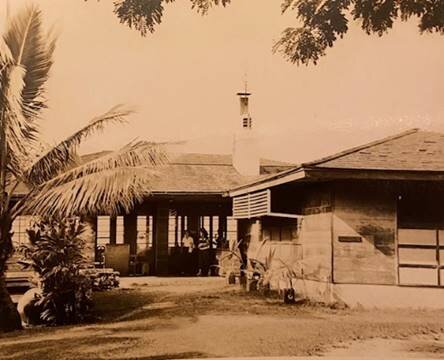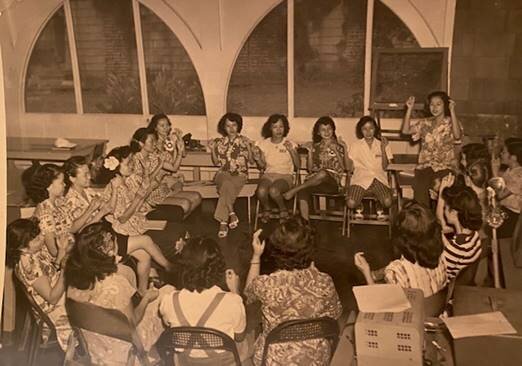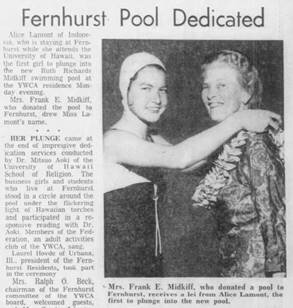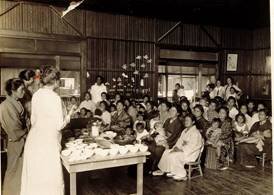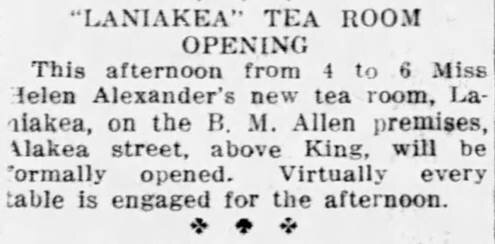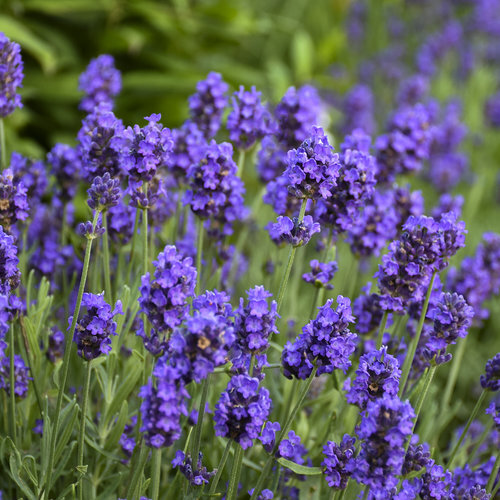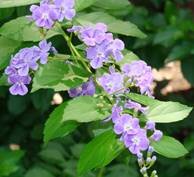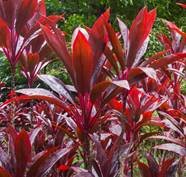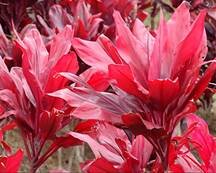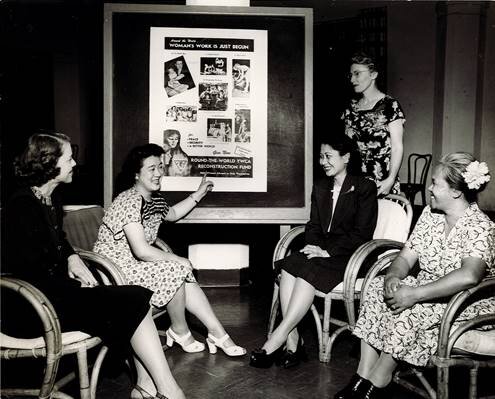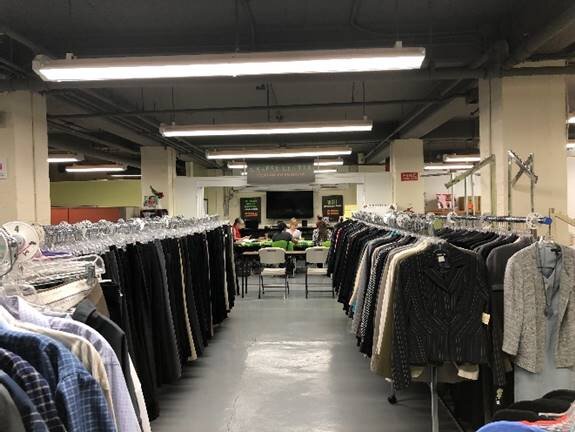A Moment in Our History: 120 Years: Happy Birthday and Many Happy Community-Focused Returns
Today is the 120th birthday of YWCA O'ahu, which originally started as “Honolulu YWCA” in 1900.
On this day 120 years ago, a group of women gathered at Mrs. B.F. Dillingham’s residence located at the “Woodlawn” corner of Punahou and Beretania Streets at 7:45pm to discuss “whether or not there was a real necessity for such an institution (YWCA) in Honolulu.”
A letter appeared in the Advertiser, prompting like-minded women to call for a meeting. Notices about the gathering appeared in local papers. (The Honolulu Advertiser: April 23, 1900, The Hawaiian Star: April 28, 1900)
Nearly fifty women met at Mrs. B.F. Dillingham’s residence on April 30, 1900
Our original board minutes from 1900. They tell a lot of stories of our early days.
The major topics of the meeting suggest how progressive or forward-thinking those women were.
Proposal of YWCA building
“The proposed building might probably provide many things which would be welcome to other women beside newcomers, such as lunchrooms, parlors for meeting friends, rooms for public gatherings, and a gymnasium.” Also “a first-rate place to bathe, with swimming tanks.”
Construction of Laniākea in 1926
Physical work
“Mrs. Frear put if to a vote to see how many of the ladies present wanted a gymnasium in the future Young Women’s Christian Association, in case one should be founded, and nearly everyone favored it enthusiastically.”
Exercise class in 1918
A temporary home or a board home for working women and aids and protection for women and girls visiting/moving to Hawai'i.
Our first home for girls “Homestead” opened in 1908 followed by two Fernhurst buildings
Education classes including languages such as Hawaiian, Japanese and Chinese
A woman who had been on the island for a few months said that “she had a great desire to learn the Hawaiian language; but there was no chance for this in the case of women. The men had classes in Hawaiian at the Young Men’s Christian Association, but the women of the City did not want to be always asking their brothers of the latter organization for favors and opportunities.”
English class in 1924
Headquarters for women “for social sympathy and extra helpfulness.”
Honolulu residents enjoying the parlor of the YWCA office in early 1900’s
After the discussion, a motion was made that we organize a YWCA association in Honolulu and the decision was made with a majority vote among the group.
Those women not only identified what they wanted but they took specific action towards attaining those goals.
One example from Mrs. Frear in one of her writings:
“Athletics is a subject to be taken seriously. The regulation bathing suit of alpaca with waist, skirt and bloomers, plus long black stockings, is doomed. Give it a farewell! Education in athletics is provided in capital letters by a secretary imported to arrange and direct classes in accord with the times.”
While the nation was still debating what the make or style of women’s bathing suits should be, YWCA O'ahu started offering swim instruction in 1912.
Julia Morgan gave us a beautiful regular size, outdoor pool where women and girls could swim.
The attire pictured above were not dresses but proposed bathing suits for women.
(Honolulu Star-Bulletin: February 22, 1913, Richmond Palladium and Sun-Telegram: June 7, 1916)
Miss Margaret Tupper, Physical Director of YWCA O'ahu showed how to resuscitate a drowning person. (The Honolulu Advertiser: August 17, 1913)
Over the past 120 years, we have had many encounters with our community members and have enjoyed their support as well as that of our women leaders.
Those who empathized with our mission have joined our cause.
YWCA O'ahu membership card of Queen Liliʻuokalani. She supported our movement until she passed away in 1917.
Those who had knowledge of skills came forward and shared their gifts with other women.
Hawaiian language expert and educator Mary Kawena Pukui taught Hawaiian language at Laniākea. She was posthumously honored at YWCA O'ahu LeaderLuncheon in 1987. (Honolulu Star-Bulletin: June 14, 1928)
Those who needed the support of other women and community members gathered at YWCA O'ahu.
Patsy T. Mink, the first woman of color elected to Congress, met her supporters at Laniākea over the years. She was also honored at YWCA Oahu’s LeaderLuncheon in 1987 together with Mary Kawena Pukui. (Honolulu Star-Bulletin: November 7, 1990)
Patsy T. Mink Center for Business and Leadership (MCBL) opened at YWCA O'ahu in 2013 – providing business and leadership development opportunities to women and girls of Hawai'i.
Our YWCA is a movement started by a small group of women that has been nurtured through the years by other extraordinary women. And thanks to the broad support of our members and the rest of our community we continue to grow 120 years later. Thank you for being part of our ohana.
-Noriko Namiki, YWCA O’ahu CEO
A Moment in Our History: YWCA and Wartime
With its roots dating back to 1858 and the establishment of the first YWCA association in New York City, the national organization saw its role and community involvement adapt and change in times of war. During WWI, YWCA became the first organization to send professional workers overseas to provide administrative leadership and support to U.S. Armed Forces.
YWCA joined the United War Work Campaign and created the War Work Council. The aim of this campaign was to raise funds during the week of November 11-18, 1918 to “help boost American soldiers’ morale and provide them with recreational activities.” Seven voluntary organizations including YWCA and YMCA joined forces for this undertaking. Local associations like YWCA O'ahu contributed to this cause.
The goal was to raise “at least $170,500,000 in subscriptions and pledges” during that period in November, 1918
Mrs. Mary Dillingham Frear, then board president of YWCA O'ahu (1914-1919) called for 2,000 women and girls to “march under the Y.W.C.A. banner in the United War Work Campaign parade.” (The Honolulu Advertiser: November 8, 1918)
YWCA also participated in the Hostess Houses programs of the United Service Organizations Inc. (USO). During WWI, YWCA reportedly established 50 hostess houses at 37 military camps across the country and it employed more than 1,000 women as hostesses to maintain and keep the houses open 24 hours a day.
YWCA’s Hostesses Houses provided comfort to those who served in the military and their loved ones
The purpose of the houses was to tend to the needs of “the thousands of women who traveled, often long distances, to the camps in order to visit family members and “sweethearts” being trained there.” Those houses became shelters “in which the soldiers buffer the military and find personal comfort, and as places for women to gain experience in managing complex and relatively large institutions.” On O'ahu, Hostess Houses opened at Schofield and Fort Shafter.
“House for Colored Work” at Camp Dix in New Jersey. Black women joined war service organizations like YWCA and “established their own groups, to meet the specific needs of Black soldiers.”
WWII required local organizations like YWCA O'ahu to quickly shift to meet the demands of the time. The pace accelerated after the 1941 attack on Pearl Harbor. YWCA O'ahu served breakfast to the men of the new Hawaiian guard – starting with 60 a day and growing to 2,500 at its peak time. Both Camp Halekipa and Kokokahi were turned into rest camps by the military.
People lining up for the food service at Laniākea
Ms. Ginger Reeves wrote to YWCA O'ahu in 2009 to share a story about her father Mr. Richard Crick who spent time at Kokokahi after he was wounded on Iwo Jima shortly after witnessing the famous flag raising on Mt. Suribachi.
“My father said it was a green peaceful oasis and a much-needed place to help heal the hearts and minds of men who had been through the horrors of battle.”
Mr. Richard Crick stayed at Kokokahi to heal his wound and spirit during WWII.
Laniākea also became a site to support war efforts. The basement served as a shelter as needed. A surgical dressing unit of the Red Cross was established on the third floor. The unit first met in January 1942 and continued to function through the war – Monday through Friday between 9:00am and 12:00pm. The unit had a daily average of 70 volunteers producing 65,000 dressings a month.
YWCA Oahu’s International Institute mobilized volunteers to produce various needed articles. Across the country, YWCA’s national office offered services to Japanese American women and girls incarcerated in WWII Relocation Centers.
Local women participated in the works of the International Institute at YWCA O'ahu
Women and girls of Japanese ancestry benefitted from the work of the YWCA in many states across the country.
In 1943, Mrs. Eleanor Roosevelt visited Laniākea during her tour of the island to observe the works of the USO. She mentioned her visit at YWCA O'ahu in her national newspaper column as she described her trip to Hawai'i.
“… for a brief moment we stopped at the YWCA to see the girls who go out to dance and play and sing the soft Hawaiian songs for the boys in the late afternoons and evenings after their own day’s work is done.”
-Honolulu Star-Bulletin: September 28, 1943
Mrs. Roosevelt walking into Laniākea – pictured second from the left.
Roughly five months before the war ended, the ground floor and the lobby of Laniākea were transformed to the USO Services Women’s Lounge. The lounge included a library, an information desk and a writing area. On the opening day of the lounge, what caught the eyes of the service women was “the powder bar.”
“Cosmetics, supplied through the courtesy of Elizabeth Arden, range from the usual rouge and lipstick to skin lotions. Most of the girls were torn between dipping into the lavish display and not wanting to touch a thing, ‘it looks so lovely.’ Other features of the powder room bound to be a boon to service women are hot showers and ironing board and iron.” (Honolulu Star-Bulletin: April 21, 1945)
The ground floor and the lobby of YWCA O'ahu were occupied by the USO Services Women’s Lounge during WWII. The lounge opened on April 12, 1945.
With the end of the war YWCA O'ahu regained the operations of its facilities to continue its work aligned with the organization’s mission.
Lauhala weaving classes held in 1945 for nurses as part of the offerings by the USO Women’s Division Recreational Program in Honolulu. The instructor Mrs. Mabel Wood taught Lauhala weaving at YWCA O'ahu for more than 20 years
A Moment in Our History: Touching the Lives of Future Generations: From Girl Reserves and Y-Teens to Girls’ Summit
Soon after I joined YWCA O'ahu in 2012, one of our “mermaids” – a group of senior members who participate in our aqua exercise classes – approached me in the lobby.
“I was a Y-Teen, you know.”
The lady, well in her 70’s nodded her head with a smile as if reminiscing about her teen years.
“We had a lot of activities. It was a fun time.”
Y-Teen State Conference in 1969
For more than a century, YWCA’s youth programs have provided a safe space for girls to grow, learn and build friendships among their peers. Youth activities evolved from many informal gatherings of girls under the YWCA program and from “the Patriotic League of the YWCA.”
The Girl Reserves Program started in 1918 across the nation in part to help girls from ages 12 to 18 “navigate through their lives during the chaos of the war” by helping them “develop a well-balanced personality, grow physically and take on social responsibility.” This was our first program specifically designed for teens.
The program’s spirit was reflected in the breakdown above using each letter of Girl Reserves. A lot of emphasis was put on character building to teach young women to become responsible and caring members of society.
A manual helped to maintain the authenticity and integrity of the program. It touched on how to work with young women of different ethnic and cultural backgrounds. One section titled “The Needs of Girls” contained chapters including “The Needs of the Foreign-Born Girls” and “The Needs of the Colored Girls.” Through this club system YWCA accommodated the needs of young women and girls of color. In addition to school clubs, local clubs formed across the country among different ethnic groups including African Americans, Japanese and Chinese who sought to find a place for learning, guidance and encouragement.
Work of “Colored Women” in New York in 1919 The New York Public Library Digital Collections
Local chapters or “clubs” were created at grade schools and junior high and high schools. Each chapter elected officers, who planned events and activities. The clubs also gave these young women the opportunity to think on their own about ways to make a difference in the communities where they lived. By the time Laniākea opened in 1927, there were nearly 30 active clubs across the island with more than 650 club members in Honolulu alone. The grade school students were assembled in “Triangles” with high school students joining “Clubs.” Each group was guided by one or more adult advisers.
McKinley Student Club in 1927
Mid-Pacific Institute Student Club in 1930
Officers planned activities for club members, many of which took place at Camp Halekipa
Preparing for an Easter event in 1931
Father & Daughter Banquet at Punahou Girls Reserves in 1925
YWCA used a new and creative approach to communicate to these young program participants about the mission and the principles of the program. Many visual and graphic aids were created to help deliver the message and to grab the attention of young women.
Posters and other visual aids show a “graphic, visual active way” to get the messages out
The Reserves movement kept growing across the nation even after the war with many girls wishing to join the program in the 1920s and 1930s. In 1946, YWCA adopted “Y-Teens” as a more descriptive name for its youth program at the national convention to respond to the changing needs of young women and girls. Through the governing of Y-Teen groups, young women developed leadership skills.
O’ahu delegation of Y-Teens off to the western regional Y-Teen conference in Asilomar, CA in 1952
Y-Teens Cooking Class in 1952
Y-Teens activities were often reported in the local papers (The Honolulu Advertiser: June 1, 1952)
More than a century later, our youth initiative is very much alive – a human lab for young women and girls to experiment with new ideas and subjects and to explore their own possibilities to thrive.
2019 Girls’ Summit Youth Program Field Trip
Girls Summit 2020. The participants and the graduates of the Patsy T. Mink Leadership Alliance (PTMLA) mentored high school students
-Noriko Namiki, YWCA O‘ahu CEO
A Moment in Our History: Kokokahi – A Place Where All Gather in the Shared Spirit of "One Blood"
For the first 25 years after its founding in 1900, YWCA O'ahu created and offered a number of classes at its main office and across town. The organization also made efforts to organize a camp program.
In 1920, the YWCA conducted the Halekipa (House of Welcome) program for a month in the summer to give camping experiences to students from grade schools, high schools and so-called “normal schools” (what later came to be known as “teacher colleges”—training for high school graduates). This provided opportunities for “getting together in the out-of-doors away from school rooms and Y.W.C.A. buldings.”
In 1920, YWCA O'ahu started the Halekipa program
The aim of Halekipa was “to develop all around girls, physically, mentally, socially and spiritually.” The participants were divided into groups and each group strived for honor points in “knowledge, health and spirit.”
Camp Staff and Counselors made sure all the participants were fully engaged in daily activities
Examples of earning knowledge honors would include learning the names of flowers and trees or writing poems and contributing to the camp paper called the Halekipa Wave. Health honors required participants to win in sports activities such as volleyball, baseball, running and swimming or to demonstrate life saving tests. Spirit points went to those who demonstrated good sportsmanship, and general helpfulness.
Halekipa participants engaged in various activities based on the camp’s three themes: knoweldge, health and spirit
The first-year program was hosted on the school grounds of the Kahuku plantation with tents loaned by the army. A committee of women felt that the “camp should be located nearer the beach” and moved the program to Waialua plantation, which offered a stretch of land along the shore at Puuiki.
The camp curriculum was filled with activities throughout the day including a daily flag ceremony before breakfast
In the early 1930’s Halekipa found a new site – Kokokahi on Windward O'ahu.
Kokokahi opened in 1927 in a valley of “41 verdant acres on Windward O'ahu with an 800-foot frontage on Kaneohe Bay.” It was based on the idea of creating “a combined conference, camp and vacation home area, shared by Christian of all races” – an idea put forth by Dr. Theodore Richards, originally from Montclair, NJ.
Dr. Theodore Richards moved to Hawaii in 1889 at the age of 22. He was appointed the principal of the Kamehameha schools four years later
The responses to Dr. Richards’ idea were not all favorable. Some people even called his plan “absurd” or “freakish.” Yet, this former principal of Kamehameha Schools moved forward with persistence to actualize his dream of creating a multi-racial community on land he purchased from Kaneohe Ranch– calling it Kokokahi, or “Of One Blood.”
When Dr. Richards presented his idea of Kokokahi, some did not show a favorable response. (Honolulu Star-Bulletin: June 8, 1927)
In 1931, Kokokahi added an amphitheater. Various missionary families contributed to Kokokahi for the creation of Kauhale or missionary cottages during the depths of the depression. Among the names placed over the cottage doors were Alakanadero (Alexander), Balawina (Baldwin), Kuke (Cooke), Kakela (Castle), Koana (Coan), Hikokoke (Hitchcock), Kamika-Lowela (Smith-Lowell), Laiana (Lyons) Wilikoki (Wilcox) and Likeke (Richards).
Honolulu Star-Bulletin: August 21, 1931
The cabins Hawaii’s missionary families helped create still stand on the grounds of Kokokahi today.
In 1935, YWCA O'ahu established Camp Halekipa on 10 acres of waterfront property with funds largely provided by the Juliette M. Atherton Trust. The construction of Atherton Hall was completed one year later. The Halekipa site was directly across the road from Kokokahi Camp. The two organizations cooperated as “a reciprocal relationship in the use of the facilities existed between the two camps.”
Juliette M. Atherton Hall
Atherton Hall today
Mrs. Juliette M. Atherton
Halekipa at Kokokahi offered programs not only for young people but also for “tired-out-business-men and housewives who went there to be rejuvenated and learn how to make their life programs more worthwhile.”
Adults also gathered at Kokokahi for a get-away
The first mothers’ camp was reportedly held in 1929. It became an instant hit and was turned into an annual event.
“While on their outing, the mothers are relieved of all cooking and meal planning and have their entire time free to devote to demonstrations and recreations. Like all campers, the mothers have not been anxious to go home when their three days’ camp is over.”
-Honolulu Star-Bulletin: March 26, 1938
Mothers enjoyed a weekend retreat at Kokokahi. Many wished to stay longer.
In 1955 Halekipa and Kokokahi merged, which allowed YWCA O'ahu to manage the operations of the combined sites. The merger was guided by Mrs. Frank E. (Ruth Richards) Midkiff, Dr. Richards’ daughter and the YWCA board president between 1936 and 1939. The combined operation was called the Kokokahi YWCA “perpetuating the name and purpose which were the dream of Dr. Richards.”
Mrs. Frank E. (Ruth Richards) Midkiff – pictured at left in a black dress – played a pivotal role for the merger of Kokokahi and Halekipa. Kokokahi was created by her father Dr. Theodore Richards. The trust her grandmother created, Juliette M. Atherton Trust, made possible the establishment of Halekipa in 1935.
In 1959, Mrs. Midkiff donated a pool to Fernhurst (which no longer exists)
The Honolulu Advertiser: June 10, 1959
The Honolulu Advertiser: June 12, 1955
In 1974, the trustees of the Kokokahi Community Trust dissolved the trust and its assets were given to YWCA O'ahu to administer in its own name. More than 90 years later, Kokokahi continues to embrace the philosophy of Dr. Richards – it is a place where all gather in the shared spirit “Of One Blood.”
Dr. Theodore Richards with his wife Mrs. Mary Atherton Richards. The trust her mother created, the Juliette M. Atherton Trust, supported many YWCA projects including the construction of the original Fernhurst designed by Julia Morgan and Atherton Hall at Kokokahi. The couple’s philanthropic work touched many who pursued further education. (Picture from The Honolulu Advertiser: November 25, 1945)
In 1957, a pool was added to Kokokahi. Volunteers went door-to-door to collect donations. The idea for the pool was reportedly sparked by tragedy in 1954, when two Windward O'ahu youngsters drowned in Kaneohe Bay. (The Honolulu Advertiser: November 25, 1956)
Ruth Richards Midkiff Hall (today known as Midkiff Gym) opened in 1970. Mr. Robert Richards Midkiff (Dr. Richards’ grandson) spoke at the opening of the gym which was named after his mother. The gym roof was replaced in 2016 after a capital campaign which raised $824,000.
-Noriko Namiki, YWCA O‘ahu CEO
A Moment in Our History: Early Immigrants Work and Live in Honolulu
Our board and staff tackled a number of tasks in the early 1900’s as YWCA established its local presence. Those included providing physical education and creating a boarding home. Another primary goal was assisting those who came to Hawai'i from elsewhere. In fact, within one year of the establishment of YWCA O'ahu, the board created a “Strangers Committee” to assist newcomers who arrived in Honolulu with no knowledge of Hawai'i.
One example: Our “Travelers’ Aid Secretary” used to show up at Pier 12 of Honolulu Harbor at 11:00pm, remaining there until 6:00am to assist women, domestic and foreign, who “arrived before daylight and had no way of reaching their destination.”
Honolulu Star-Bulletin: October 8, 1919
YWCA O'ahu also provided the necessities to make the woman’s restroom pleasant such as a couch, towels, soap, clean linen and furnished janitorial service of the room so that women could freshen up after long hours of travel.
The Honolulu Advertiser: November 28, 1924
As the country experienced a surge in immigration, assisting foreign-born women became one of the core works of the YWCA across the nation, including O'ahu. With the increased arrival of plantation workers at the turn of the century came the picture brides. YWCA O'ahu started hiring staff who spoke the languages of those immigrant women and understood their cultures.
Honolulu Star-Bulletin: August 30, 1917
YWCA O'ahu hired Mrs. Tsue Kishimoto to assist picture brides from Japan. Mrs. Kishimoto is fourth from the left in the first row standing with then board president Mrs. Walter F. Frear.
The YWCA sent staff to countries like Japan to assist women even prior to their arrival to the United States by establishing a hotel where they could stay before sailing for Hawaii, providing instructions in American manners and customs and assisting them in complying with immigration requirements.
Honolulu Star-Bulletin: May 30, 1919
Japanese English Class in 1924
Our efforts expanded further with the opening of the International Institute in 1919. The work of “Americanization” had been taking place across the country to help foreign-born individuals assimilate into life in America and YWCA O'ahu made it part of its mission work in the community. Some YWCA staff members, including one who had been working among the picture brides at Angel Island in San Francisco, were assembled in Honolulu to assist the creation of the institute.
English Class in 1924
Speaking at the annual meeting of the association, Sue Barnswell, national immigration secretary of the YWCA spoke of the importance of the Americanization work.
“Can you afford to be passive when four-fifths of your population do not understand the ideals of America, many of whom do not understand the language, and whose birth rate is nine times that of ours?”
English Class at Japanese Hospital in 1923
One of the primary reasons for establishing the institute was to solve the “misunderstanding between the mother who has grown up in a foreign land, and the young girl who has become Americanized.” The YWCA staff observed that it was this misunderstanding that was responsible for “a great many of the cases which come up in the juvenile court.” The sessions were created specifically for women to address their issues. Another club was created for girls.
1920 Iwilei Filipino English Class
The Institute had the Hawaiian name Ka Hale Kokua (The House of Friendly Help) and opened in June of 1919 on Nuuanu Street under the leadership of Miss Elsie Wilcox. Its staff consisted of one Japanese, one Chinese, one Korean and one Filipino member based on a philosophy that “immigrants can be reached properly only through workers who speak their own language.” English was a harder language to master for Asian immigrants than those from Europe.
Interracial cooking Class in 1920
In addition to the main classes such as English and American culture and customs, other life enrichment classes were offered – sewing, cooking and music. Women came to the institute to learn but staff members often travelled to the neighborhoods where those immigrants were and gave classes when needed. The neighborhood classes were “particularly valuable for the Chinese women, many of whom are unable to travel to the institute building from distant parts of the city on account of their small feet.” Although the practice was outlawed in 1912, the immigrant Chinese women at that time experienced the ancient practice of foot binding which made it difficult for them to walk long distances.
Classes were taught outside of the Institute to meet the needs of immigrant women. (Kakaako Mothers Club 1923)
Miss Nell Findlay who presided over the Institute described her work as follows:
“One of my favorite classes is held at the home of one of the members. The lady of the house sits with a twin in each arm and her book propped up in the middle, while others of the neighborhood come in one by one carrying sleeping children and perhaps carrying some of their household work with them. The earnestness of purpose and effort which they apply to the work is amazing.”
Miss Nell Findlay of Oakland returned from war service in Verdun and joined Ka Hale Kokua
While helping immigrant women assimilate to the culture of the United States, International Institute often created opportunities to help them perpetuate and share their own cultures.
Pioneer Days in Hawaii Play in 1932
Chinese play 1924
Japanese program in 1928
Korean Girls Club High School Tea in 1932
The work of the Institute continued well into the 50’s. Although the direct work of the Institute no longer exists, its influence and impact continues to touch the generations of immigrants.
Honolulu Star-Bulletin: December 21, 1959
International Institute Event in 1950
Cookbooks were a great way to share one’s culture
-Noriko Namiki, YWCA O‘ahu CEO
A Moment in Our History: Helen Alexander and "Laniākea"
“Why is this building called Laniākea?”
It’s a very common question—and one that I myself remember asking when I first started working at YWCA O'ahu.
Laniākea opened in 1927
This Hawaiian word is frequently translated to mean “open skies” or “wide horizon.” I remember one of my colleagues explaining to me the interpretation relates to the unlimited opportunities this building provides to the women and girls of Hawai'i. It made sense to me.
“Who named the building Laniākea?”
That’s another question that is often asked. No one has been able to identify the individual who came up with the idea, but we seem to have some related history about the area where our historic headquarters building stands today and the word Laniākea.
The Honolulu Advertiser: May 8, 1924
As this newspaper story details, a few years before the building opened in 1927 the site we purchased on Richards Street has a mention of “Laniākea.”
The land where the YWCA stands today was part of the Allen Estates. It was “the location of a large frame house” owned by Samuel Clesson Allen (1831-1903) and Bathsheba M. (Robinson) Allen (1849-1914).” Ralph Thomas Kam, Ph.D. who teaches historic preservation at UH kindly shared this information with me.
The area was known as the “Allen Estates.” (The Honolulu Advertiser: May 9, 1924)
The property that YWCA purchased was part of the homestead of the late Mrs. Bathsheba M. Allen and “the buildings used by the Girl Scouts and studios.” David Howard Hitchcock, a Hilo native who was known for his realistic landscape paintings of the Hawaiian Islands, once had his art studio in that area.
David Howard Hitchcock created many local landscape-motif paintings in his studio that used to stand where Laniākea is today.
There was one person who used the name “Laniākea” and operated a business prior to us moving in that area.
Helen A. Alexander
Miss Helen Andrews Alexander, a descendant of one of Hawaii’s foremost missionaries, leased the houses and gardens from the Allen Estates and opened the Laniakea Tea Room in 1916. She had taken “the whole of the Allen premises on Alakea near King street, with entrances on Alakea and Richards streets,” the Honolulu Star-Bulletin reported the day before the tearoom opened on October 25, 1916.
The Laniakea Tea Room was a hit since day 1 of its operations as “virtually every table is engaged for the afternoon,” as reported by the Honolulu Star-Bulletin on October 25, 1916.
Born on Maui and educated at Punahou, Helen Alexander often spent time outside the islands. During World War I, she “did canteen work with YMCA in Europe especially in France.” She also spent many years on the east coast of the United States. And it was her time outside of Hawai'i where she saw the concept of “tea rooms” in practice and how it was embraced by women.
“Tea will be served in the lanais and gardens surrounding the beautiful old residence formerly the home of the late Mrs. B.M. Allen. This rest house is an innovation in Honolulu’s enterprises. ‘Laniakea’ will cater especially to women shoppers who want some convenient place to rest and enjoy afternoon tea.”
-The Honolulu Advertiser : October 20, 1916
Honolulu Star-Bulletin: October 31, 1916
The Laniakea Tea Room soon became a go-to-place for Honolulu’s society women as well as out-of-town women “who could do almost anything rather than go to her hostess’ home for luncheon.” The society pages of local papers often reported the sightings of patrons.
The tearoom became a place to entertain out-of-town guests. In 1917, a group of officers of a Japanese training squadron enjoyed a Hawaiian night at Laniakea Tea Room during their stay. (The Honolulu Advertiser: June 3, 1917)
Helen Alexander was entrepreneurial. She soon added different components to the tearoom including two theatres, a gift shop, sewing and classes for children’s dancing and handicraft.
Honolulu Star-Bulletin: October 16, 1917
The Honolulu Advertiser: June 8, 1917
The Honolulu Advertiser: January 4, 1918
While introducing this new concept from the outside world, Helen incorporated local culture into her business practices. One of them was lauhala weaving. The caption for the photo below describes Helen’s efforts to support Hawaiian culture.
“Hawaiian women engaged in the task of weaving mats from the leaves of the lauhala, at Laniakea Tea House and Gift Shop, where the work of reviving the ancient Island industry is now being seriously undertaken.”
Women weaving lauhala at Laniakea Tea Room (The Honolulu Advertiser: November 28, 1916)
Although her business seemed to flourish in the community, the state’s tourism was heading in the opposite direction. The on-going war probably contributed to the declining flow of visitors to Hawai'i. The Sixty-Sixth Annual Report of the Hawaiian Mission Children’s Society describes the predicament Helen had to face.
“Miss Helen A. Alexander, because of the falling off of tourist trade, has been obliged to curtail some of the multifarious enterprises so popular at Laniakea, giving up the Gift-Shop and presenting to the Red Cross the proceeds of the sale of the toys and gifts.”
Declining tourism greatly affected her business (The Honolulu Advertiser: March 11 & April 7, 1918)
In the fall of 1918, Helen Alexander left Hawai'i again – this time to go into “YWCA canteen work in France.” She then took her culinary and entrepreneurial skills to the east coast and opened another tearoom in Connecticut, tantalizing the taste buds of diners including “discriminating New Yorkers.” Her highly seasoned chicken curry “with all the trimmings of mango chutney, shredded coconut, chopped bacon and grated peanuts became a highlight of delightful dining.”
Her recipes were often sought out and appeared in local newspapers. (Honolulu Star-Bulletin: January 25, 1918)
In 1926, Helen Alexander released a cook book carrying her name, sharing her time-tested recipes with home cooks. She eventually returned to Hawai'i and established her tearoom in “a picturesque grass house on a hill commanding the pleasant blue sweep of Kaneohe Bay across Nuuanu Pali from Honolulu.”
Helen continued to share her love of cooking and entertaining through her cookbooks
It is still not clear why Helen chose the word “Laniākea” but it is another source of empowerment to know the land our building stands on today was once the site of successful business run by a woman more than 100 years ago.
-Noriko Namiki, YWCA O‘ahu CEO
A Moment in Our History: Laniakea's Other Architect - Catherine Jones Richards
When you set foot in our historic headquarters building Laniākea, you wander into an open-air concept that stretches through the entire space--from our breezeway “loggia” to the sun-drenched pool. It almost makes you forget the hustle-and-bustle of downtown Honolulu.
Another unique feature: the lush foliage and flowers that surround the building.
You may not find all of them on the property today, but these are some of the plants and flowers originally assembled for Laniākea at the time of its opening in 1927.
Hibiscus, Lavender, Duranta, Maroon and Red Ti and Pink Oleanders added colors to the newly opened Laniākea in 1927.
The Honolulu Advertiser: June 19, 1927
While Julia Morgan was highly celebrated for her design of the building, another woman architect directed the landscape designing. Catherine Jones Richards carefully arranged the various flowers that grew in Hawai'i to complement the building Morgan designed. Richards became Hawaii’s first licensed landscape architect.
Catherine Jones Richards was a pioneer in the field of landscape architecture in Hawaii (Honolulu Star-Bulletin: February 22, 1930)
A descendant of missionaries in Honolulu, Catherine studied landscape architecture at the Cambridge School of Architecture and Landscape Architecture in Massachusetts in the early 1920’s. She also studied in Europe. Upon returning to Honolulu, she began her practice in 1926.
Even while being away from her home of Hawaii, Catherine did not neglect to learn “things Hawaiian.” When she opened a studio in 1928, she shared with a local newspaper her commitment to work as a landscape architect in Honolulu for the rest of her life by devoting all her energies to helping to “beautify the city.”
“My aloha was doubled during my absence. Always I have felt the call of the Islands.” She said she wanted to do her work in Hawai'i for the rest of her life and she did just that.
The Honolulu Advertiser: August 19, 1928
Around the time of her studio opening, Catherine invited landscape architect Robert O. Thompson to join her practice. He was a native of Michigan who met Catherine while he was studying at Harvard. In 1934, the two business partners married – and under the new name of Thompson and Thompson, the dynamic duo worked on major projects across town from public buildings to parks, making them the foremost landscape designers in Hawaii.
Catherine Jones Richards and Robert O. Thompson created the landscape architecture firm Thompson and Thompson and became life and professional partners.
Their names often appeared in the gardening section of local newspapers. (Honolulu Star-Bulletin: September 20, 1930)
A short list of their works in Hawai'i includes:
Honolulu Museum of Arts
The National Cemetery of the Pacific
The Doris Duke Residence
Ewa & Waialua Plantation
Pacific Club
Board of Water Supply station grounds
Tripler Army Hospital
In addition to their passion for landscape design, the couple also seemed to have shared a common interest as car-enthusiasts. These two Nash “400” cars were delivered to them in 1929. (The Honolulu Advertiser: June 23, 1929)
The couple’s design work for Ala Moana Park
Catherine was a charter member of the Outdoor Circle. The couple received various awards and recognitions throughout their careers. During World War II, Mr. Thompson was reportedly in charge of camouflage planning for army installations.
Honolulu Star-Bulletin: June 26, 1962
Although their names were often associated with large projects, the couple also wrote and spoke to home gardeners about the joy of landscaping. In part reflecting the times in which she lived, Catherine once said, “Landscape architecture is, or should be, as important to a house as clothes are to a woman. A lovely woman can so often be marred by ugly clothes, and a lovely house ruined by horrible planning, a terrible approach and awful grades.”
Laniākea in 1927 overlooking the pool from Loggia
Julia Morgan used the floral concept in the design of the front doors, highlighting flowers that grow in Hawai'i including hibiscus and plumeria
Julia Morgan and Catherine Jones Thompson – two female architects who together made Laniākea Hawaii’s first major structure designed completely by women.
-Noriko Namiki, YWCA O‘ahu CEO
A Moment in Our History: Mary Sia's Kitchen and MCBL
One morning in the early summer of 2012, a few months after I joined YWCA O'ahu, I was called to a room on the third floor – a room I had never seen. It was assigned the number 304, and stood at the Makai corner of the building facing Iolani Palace. The room was filled with sunlight, coming with a full view of Iolani Palace. I remember hoping my desk was in that room which seemed unoccupied.
A few of us gathered that morning in Room 304 for a CPR class. Some dummy dolls laid on the floor for resuscitation practice.
“Remember the song Staying Alive? Play that song in your head as you give chest compressions. That’s got a good rhythm and tempo.”
“Ah, ha, ha, ha, stayin' alive….”
As I played that song in my head and kept pressing my dummy’s chest, I looked around the room (probably not a good thing to do as you try to rescue someone) and noticed cabinets, stoves, an island and sinks. Things you find in a kitchen.
I turned to my colleague who was also practicing chest compressions and asked, “Was this ever a kitchen?”
She replied, “Yes. A very famous Chinese cooking instructor taught here for many years. Mary Sia.”
Mary Sia shared the joy of Chinese cooking with people of all nationalities
People often looked for a class announcement in the local papers. (Honolulu Star-Bulletin: May 2, 1942)
Indeed, Mary Sia taught Chinese cooking at YWCA O'ahu for nearly 30 years. She also conducted many tours of Chinatown for us.
Room 304 at Laniākea where Mary Sia gave Chinese cooking lessons for years
Although we do not currently offer any cooking instruction at Laniākea, this was often a popular site for such learning—going back to the early 1900’s. One example was a YWCA-sponsored cooking class in 1914, the year WWI broke out, featuring methods that conserved wheat.
Chinese Cooking Class in 1924
A native of Honolulu with a degree from UH in home economics, Mary Sia also studied nutrition and music while studying at Cornell and Yale. She credits her mother Dr. T. H. Kong Li (her father was also a physician – Dr. Khai Fai Li) who introduced her to the joy of Chinese cooking.
Mary Sia with her students
“Her love of life attracted guests from every part of the world and her warm hospitality included the finest Chinese food. In this atmosphere, my interest in the art of Chinese cooking naturally took root and flourished.”
-Mary Sia’s Chinese Cookbook
She continued to hone her skills and deepen her knowledge of Chinese cooking when she moved to Peking, China in the 1920’s with her husband Dr. Richard H. P. Sia, a research physician.
As she moved to Honolulu with her family, she started teaching at YWCA O'ahu in the 1940’s. Her first book Chinese Chopsticks was published in 1935 and it soon went into a second edition due to its popularity. Her second book Mary Sia’s Chinese Cookbook in 1956 was also a hit.
Mary Sia was not only a good cook but also an innovative one. She took traditional Chinese cooking recipes, put them into measurements and offered specific instructions. She also modified them so that individuals could cook using ingredients that were locally available.
While she was trained in the classical cooking of China, her teaching style was versatile, flexible and user-friendly. Mrs. Sia knew how to modernize the old and traditional. This tip below demonstrates her pragmatic approach.
“If you do have any meat dumplings left over, save them to deep-fat-fry and serve them with cocktails.”
Mrs. Sia taught practical skills and techniques to her students
Her classes were well-received not only by women but also by men. One of her students, Dr. Arthur J. Marder, then a UH professor, described his experience with Mrs. Sia’s class in the early 1950’s in the foreword he dedicated for her second book.
“The date was 1951, spring and I was the sole male in a class of twenty-four! My embarrassment was not lessened when my classmates, assuming a total ignorance of cooking fundamentals on my part, would not even let me break my own eggs and open my own cans! Eventually, they accepted me as an equal, and I must say that we had a jolly time learning to make some of the more mouth-watering dishes of both north and south China.”
This was not his last class with Mrs. Sia.
Men also enjoyed Mrs. Sia’s classes
Mrs. Sia was also a director of YWCA O'ahu and served as the vice president of the board between 1945 and 1946. Long after she passed away in 1971, her time-tested recipes are still appreciated today.
In 2013, YWCA O'ahu converted Room 304, once known as Mary Sia’s Kitchen, to the Patsy T. Mink Center for Business and Leadership (MCBL). A few years later, the center moved to the ground floor, at the same front Makai corner of the building.
2013 Renovation of Room 304 – Mary Sia’s Kitchen
Today the center assists individuals who seek to start or grow their businesses. The center also offers leadership programs to the women and girls of Hawai'i. From cooking skills to entrepreneurship and leadership skills, our classrooms continue to create learning opportunities.
Patsy T. Mink Leadership Alliance Program
Girls’ Summit Youth Program
-Noriko Namiki, YWCA O‘ahu CEO
A Moment in Our History: Fernhurst's Continuing Evolution
In our inauguration year of 1900, our board was focused on establishing a headquarters building, but that was not the only work members were doing. Our leaders wanted to create a “boarding house” for the working women of Oahu, and the Boarding Home Committee was established to move that plan forward.
Our plan came into reality in the form of a joint project with YMCA. The two organizations opened a boarding house called Engleside on Vineyard in 1904.
The Honolulu Advertiser: July 25, 1904
Four years later, we opened our first home for girls, called “Homestead”. This was made available thanks to a gift for the leasehold for 25 years of the Castle House on King Street.
The Honolulu Advertiser: May 26, 1908
Although Julia Morgan’s name is often associated with our historic headquarters Laniākea – it was her second architectural design work for YWCA O'ahu. Prior to Laniākea she designed Fernhurst, which opened at the corner of Alapai and King Streets in 1921. The three-story building with 35 bedrooms had a feel described as “southern colonial adapted to local conditions.” Most rooms were dedicated to “permanent guests” with some set aside for “transients.”
Julia Morgan’s Fernhurst opened in 1921. Each resident had “her own bed and a built-in bureau.”
The site valued at $80,000 and the building valued at $70,000 were gifted by the Atherton family –in memory of Miss Kate Marion Atherton who passed away in 1919 after suffering a long illness. Her mother Mrs. Juliette M. Atherton, who played a pivotal role in making this gift to honor her daughter passed away two years later, a few months prior to the opening of the building. The J.B. Atherton family made the location their home for more than 40 years before making way for YWCA.
Miss Kate Marion Atherton also left a bequest gift of $10,000 to YWCA from her estate
Mrs. Juliette M. Atherton was deeply committed to the “welfare of the people of Hawai'i” and created the Juliette M. Atherton Trust which became the foundation for the Atherton Family Foundation.
Mrs. Juliette M. Atherton once spoke of their gift to Fernhurst as follows:
“[Fernhurst]...given in memory of my daughter Miss Kate Marion Atherton, who always maintained a deep interest in girls and young women, seeking to do all she could to make their lives happier and more useful, and we trust that through such a home your Association may thus minister to the young women of this city.”
The name “Fernhurst” is said to derive from many ferns that “grew around the stately palms that lined the driveway and else-where on the ground.” Mrs. Atherton was a botanist and she showed “remarkable ability and had herself collected specimens of all the known varieties of ferns in Hawaii.” This also might explain why the property was surrounded by ferns.
Fernhurst residents reminisce about their stay in 1951 before the move to the new Wilder Avenue location. (The Honolulu Advertiser: December 16, 1951)
For 30 years, this building served as “a home away from home” to more than 10,000 working women, from secretaries to officer workers, before it was sold to Honolulu Rapid Transit Company in 1951 that “needed parking areas for its expanding fleet of buses.”
The Honolulu Advertiser: August 5, 1950
Fernhurst moved to Makiki in 1952 – at the former site of the Pleasanton Hotel. Mrs. Frank E. Midkiff, the granddaughter of Mrs. Juliette M. Atherton was our board president between 1936 and 1939 and she headed a committee that helped purchase the site and manage the move.
Fernhurst moved to Makiki in 1952 – at the former site of the Pleasanton Hotel. Mrs. Frank E. Midkiff, the granddaughter of Mrs. Juliette M. Atherton was our board president between 1936 and 1939 and she headed a committee that helped purchase the site and manage the move.
The Fernhurst facility that opened in 1952 had a much larger footprint than the current building.
Residents enjoyed various activities on the property and built friendships
Fernhurst closed its doors temporarily at the end of 2002 for much-needed renovations after 50 years of service. The work included bringing “the first floor into compliance with the Americans with Disabilities Act,” and upgrading the plumbing and electrical systems and general facelifts. Roughly half of the Fernhurst property was sold to pay for the project in addition to funds raised through community support including a $1 million grant from the Harry and Jeanette Weinberg Foundation. The work was completed in 2004.
Fernhurst today
A few years after reopening, we added the Homebase program to provide transitional housing with supportive services to help women working towards financial stability and permanent housing. In 2015, YWCA O'ahu introduced to Fernhurst the state’s only community-based furlough program for women, named Ka Hale Ho‘āla Hou No Nā Wāhine or “The Home of Reawakening for Women.” Through these two programs, YWCA O'ahu supports women transitioning from incarceration and economic hardships. Our work of assisting women seeking self-sufficiency and independence continues today.
Fernhurst in the 1960’s
Fernhurst today
-Noriko Namiki, YWCA O‘ahu CEO
A Moment in Our History: Women Helping Women for More than a Century
Today a large portion of Laniākea’s Lower Level is dedicated to one of our signature programs – Dress for Success Honolulu. YWCA O'ahu has been the sole operator of this program in the state since 2003. Nancy Lublin started Dress for Success in 1996 in the basement of a church in Manhattan. She was a second-year law student and worked with three nuns and $5,000 she inherited from her great-grandfather. The program’s mission is “to empower women to achieve economic independence by providing a network of support, professional attire and the development tools to help women thrive in work and in life.”
Dress for Success Boutique at Laniākea
Our history of assisting Oahu’s working women predates the creation of Dress for Success. Choosing the right attire for different occasions including business is not a new concern for us—it has long been on the minds of O'ahu’s working women.
Here are some tips from our clothes expert Miss Edwin who gave lectures on “Personal Appearances” in 1922:
“Study yourself before a mirror, critically and impersonally. When we buy a hat, we sit down and see only our heads, and the hat doesn’t suit our whole body. Study yourself as you go down the street. Store windows are fine for this purpose.”
She also had this to say about fashion:
“Styles and fashions are made by manufacturers whose business it is to keep things changing. Women will follow fashions whether or not they are becoming. The greatest compliment one woman can pay another is that a dress is just like her, whether she had made or bought the dress.”
Our personal appearance classes covered subject matters including how to budget and shop for clothes, practical care of hair, face, hands and one’s general appearance. (Honolulu Star-Bulletin: November 17, 1922/ Honolulu Star-Bulletin: January 26, 1924/Honolulu Star-Bulletin: December 1, 1922)
More women used to make what they wore. Millinery Class in 1924.
Similar to what our Dress for Success program does today, assisting women seeking employment was one of the objectives of our organization since its foundation in 1900. Our work was often done with the help of the Employment Committee. It’s documented in our board minutes as early as 1902 where it’s noted that “Many women are out of employment and apply to Mrs. Brown (our then General Secretary) for help in getting a situation.”
Employment Committee Members in 1938
Honolulu Star-Bulletin: September 19, 1924
Our Dress for Success program moved to its current home on the Lower Level of Laniākea in 2013. The program has always been in the building since its beginning in 2003 but in much smaller quarters. We spent the entire year of 2012 preparing the room to give the program much needed space.
Prior to Dress for Success occupying the space, that room at Laniākea served individuals with an interest in the arts. Internationally renowned ceramics artist Toshiko Takaezu opened a studio in 1948. The ceramics studio was equipped with five electric kilns, a large gas kiln, two raku kilns, and sixteen wheels.
Toshiko Takaezu at YWCA O'ahu Ceramics Studio
A native of Pepe'ekeo of the Big Island, Toshiko built a successful career on the mainland as an artist and won a number of awards and recognitions. Toshiko also mentored many young artists and taught at several universities and art schools including Cranbrook Academy of Art in Michigan and Princeton University, where she was awarded an hononary doctorate of Fine Arts.
Under Toshiko’s guidance and instructions, students explored their creativity and made their own unique art pieces
Celebrating studio’s 50th anniversary in 1998
Toshiko with her students at the courtyard in 1992
The studio closed in 2008 and Toshiko passed away in Honolulu in 2011 at the age of 88. During the course of her career and through The Toshiko Takaezu Foundation – Toshiko supported our mission and activities in many ways for a long period.
The transition year in 2012 to convert the ceramic studio to create the Dress for Success boutique
The room once utilized by the leading artist of our state who made an international career now provides employment opportunities to hundreds of Hawaii’s women each year. Toshiko’s legacy and spirit continue to live in this room.
Women receiving coaching at the Dress for Success Career Center Today seeking employment/career opportunities
-Noriko Namiki, YWCA O‘ahu CEO













